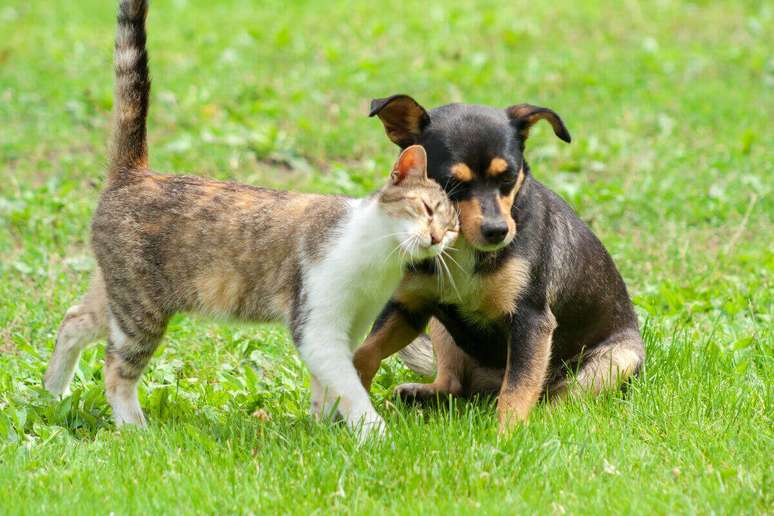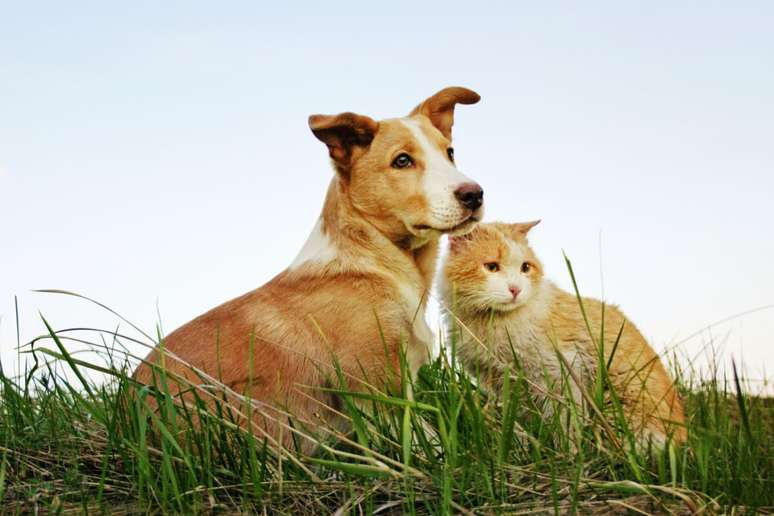Find out when this custom should be a cause for concern and what types of herbs can be offered to pets
html[data-range=”xlarge”] figure image img.img-1f34f6f879ca1606c4f15dfee3106555hw5k1nom { width: 774px; height: 516px; }HTML[data-range=”large”] figure image img.img-1f34f6f879ca1606c4f15dfee3106555hw5k1nom { width: 548px; height: 365px; }HTML[data-range=”small”] figure image img.img-1f34f6f879ca1606c4f15dfee3106555hw5k1nom, html[data-range=”medium”] figure figure img.img-1f34f6f879ca1606c4f15dfee3106555hw5k1nom { width: 564px; height: 376px; }
Dogs and cats are carnivorous animals, but some of them may have a habit of eating grass. As explained by veterinarian Mayra Susenko, this type of behavior can be motivated by several factors, such as:
- Animal instinct based on the behavior of its ancestors;
- The animal found something curious in the grass and decided to “investigate with its teeth”;
- He likes the smell, so he eats it;
- The animal senses gastrointestinal disturbances and instinctively ingests the grass to relieve the discomfort;
- Eat to meet the need for fiber in foods and improve digestion and intestinal motility.
When to be a cause for concern
While it may seem strange, when weed ingestion happens occasionally, there’s no need to worry. This is because it usually does no harm to dogs and cats. However, according to Mayra Susenko, the tutor should be alert if the pet starts eating suddenly and in large quantities, as well as showing other symptoms, such as vomiting or diarrhea, listlessness and loss of appetite.
In this case, it is important to take him to the vet to investigate what is wrong. “Excessive grass intake can be a sign of malnutrition, gastritis, dehydration, worms, abdominal cramps, among other problems that need to be investigated and treated properly,” explains the vet. Additionally, for some pets, excessive intake can cause vomiting, diarrhea, or other digestive problems.
Pay attention to the types of grass
While they all look the same, they’re not all kinds of grass that cats and dogs can eat. “It is important to pay attention to everything the animal eats, since some very common plants in our daily life can be toxic to animals”, warns Mayra Susenko, who adds: “in the case of grasses, there is practically no problem, as long as they are not sprayed with chemical fertilizers or pesticides”.

Healthy grams for pets
Some types of grass, such as common, wheat and barley, can easily be grown at home and offered to children. animals pet. “Nowadays, it is common to find pots with pet-specific grass sold in department stores and a mix of wheatgrass seeds, oats, birdseed, millet and millet, which can be planted indoors,” says Mayra Susenko .
Benefits of a few grams
According to the vet, grass grown from popcorn corn is very good for cats, as it helps control hairballs and prevents vomiting and diarrhea. Also, it takes a few days to germinate.
Wheatgrass, in turn, contains nutrients that are important for animal health, such as vitamins A, B, C and E, as well as minerals such as calcium, iron and magnesium. “It’s a food popular with pet owners looking for a more nutritious alternative to offer their pets, and is commonly consumed by humans in natural juices,” says Mayra Susenko.
Despite the benefits, no type of herb should be used to replace the feed or main food of dogs and cats, which must be balanced and indicated by a veterinarian, in order to satisfy all the animal’s nutritional needs.
Source: Terra
Ben Stock is a lifestyle journalist and author at Gossipify. He writes about topics such as health, wellness, travel, food and home decor. He provides practical advice and inspiration to improve well-being, keeps readers up to date with latest lifestyle news and trends, known for his engaging writing style, in-depth analysis and unique perspectives.









